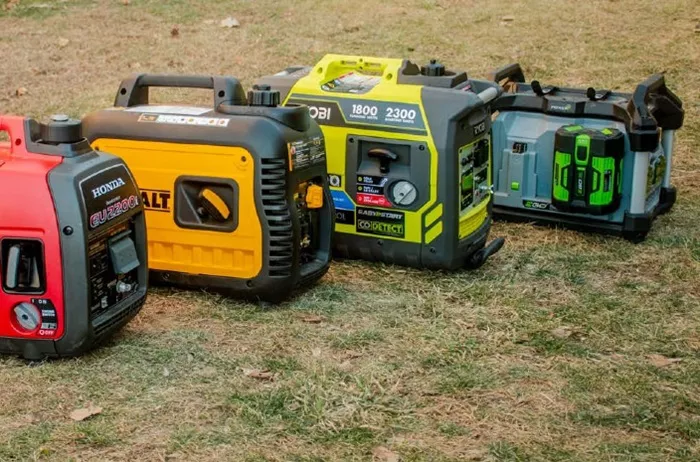Power outages can happen unexpectedly due to storms, grid failures, or maintenance issues. A home generator ensures that your essential appliances keep running, providing comfort and safety during emergencies. This guide covers everything you need to know about home generators, including types, key features, installation, and maintenance.
Types of Home Generators
Home generators come in different types, each suited for specific needs. Understanding their differences helps you choose the right one.
Portable Generators
Portable generators are versatile and budget-friendly. They run on gasoline, propane, or diesel and can power essential appliances like refrigerators, lights, and small electronics.
Pros
- Affordable
- Easy to move and store
- No permanent installation required
Cons
- Manual operation (must be started during an outage)
- Limited power output (usually 3,000–8,500 watts)
- Requires fuel storage and ventilation
Standby Generators
Standby generators are permanently installed and automatically turn on when the power goes out. They connect to your home’s electrical system and run on natural gas or propane.
Pros
- Automatic operation
- Higher power output (7,500–20,000 watts or more)
- Can power an entire home
Cons
- Expensive upfront cost
- Requires professional installation
- Needs regular maintenance
Inverter Generators
Inverter generators are a type of portable generator that produces clean, stable electricity, making them ideal for sensitive electronics like laptops and medical devices.
Pros
- Fuel-efficient and quieter than conventional generators
- Safe for electronics
- Lightweight and portable
Cons
- Higher cost than standard portable generators
- Limited power capacity (usually under 4,000 watts)
Solar Generators
Solar generators use solar panels to charge batteries, providing a renewable energy backup solution.
Pros
- No fuel costs
- Silent operation
- Eco-friendly
Cons
- Limited power unless paired with large battery banks
- Dependent on sunlight availability
Key Features to Consider When Buying a Generator
Choosing the right generator depends on several factors. Here’s what to look for:
Power Output (Wattage)
Starting Watts vs. Running Watts: Some appliances (like refrigerators) need extra power to start (starting watts) but less to run continuously (running watts).
Total Load Calculation: Add up the wattage of all essential appliances to determine the generator size you need.
Fuel Type
Gasoline: Easily available but has a short shelf life.
Propane: Stores longer but requires special tanks.
Diesel: Efficient but noisy and emits more fumes.
Natural Gas: Convenient if your home has a gas line.
Transfer Switch Requirement
A transfer switch safely connects the generator to your home’s electrical system. Manual transfer switches require you to switch power sources, while automatic transfer switches (used with standby generators) do it for you.
Noise Level
Generators can be loud. Inverter generators are the quietest (50–60 dB), while diesel generators are the loudest (70–90 dB).
Runtime
Check how long the generator can run on a full tank. Standby generators can run for days if connected to a natural gas line, while portable generators may last 8–12 hours.
Installation & Safety Tips
Proper installation ensures safe and efficient generator operation.
Professional Installation for Standby Generators
Standby generators must be installed by a licensed electrician to ensure compliance with local codes and safe connection to your home’s electrical system.
Proper Ventilation for Portable Generators
Never run a portable generator indoors—carbon monoxide poisoning is a serious risk. Always place it at least 20 feet away from windows and doors.
Grounding the Generator
Some generators require grounding to prevent electrical shocks. Check the manufacturer’s instructions.
Using Heavy-Duty Extension Cords
If connecting appliances directly, use outdoor-rated, grounded extension cords that can handle the generator’s wattage.
Maintenance Tips for Longevity
Regular maintenance keeps your generator reliable.
Routine Oil Changes
Portable generators: Change oil every 50–100 hours of use.
Standby generators: Follow the manufacturer’s schedule (usually every 100–200 hours).
Fuel Stabilization
If storing gasoline, add a fuel stabilizer to prevent degradation. Run the generator dry before long-term storage.
Battery Checks (For Standby Generators)
Standby generators have a battery that needs periodic testing and replacement every 2–3 years.
Regular Test Runs
Run your generator for 10–15 minutes monthly to ensure it’s working properly.
Common Mistakes to Avoid
Overloading the Generator: Exceeding wattage capacity can damage appliances and the generator.
Ignoring Local Regulations: Some areas have noise and emissions laws for generators.
Skipping Maintenance: Neglecting oil changes and filter replacements reduces lifespan.
Conclusion
A home generator is a valuable investment for uninterrupted power during outages. Whether you choose a portable, standby, or solar generator, understanding power needs, fuel options, and safety measures ensures you make the right choice. Regular maintenance will keep your generator ready when you need it most.
By considering these factors, you can select the best generator for your home and enjoy peace of mind during emergencies. This guide provides a thorough yet easy-to-understand overview of home generators. If you have further questions, consult a licensed electrician or generator specialist for personalized advice.

